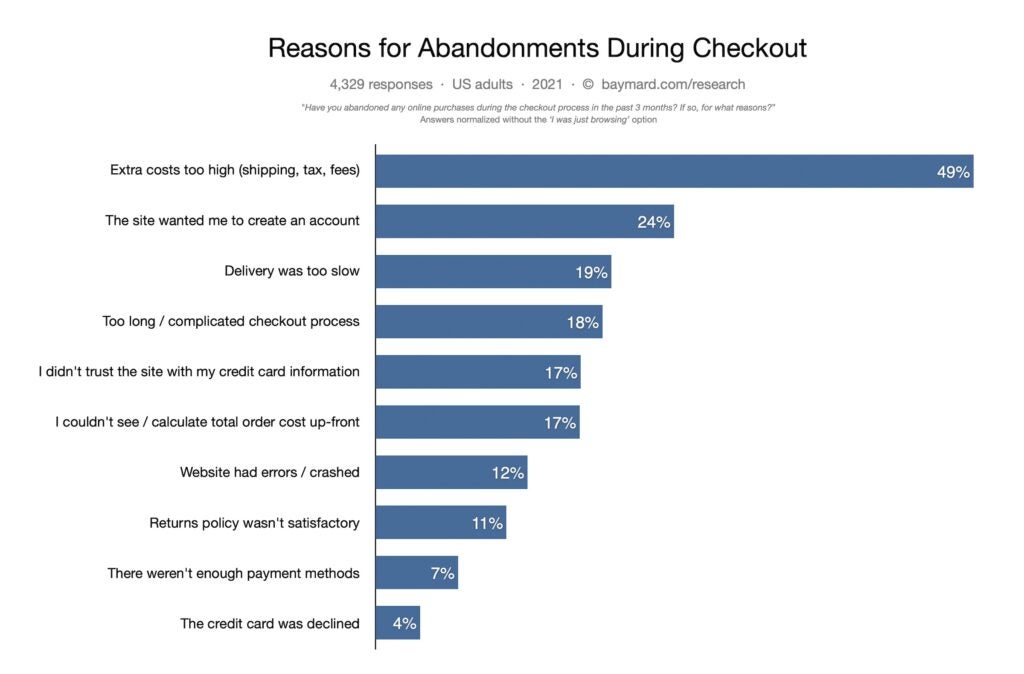
Reducing shopping cart abandonment leads directly to more sales and revenue. Mohamed Dabo looks at this core area of focus for many online retailers
A range of data, including several customer surveys, suggests that people are abandoning online purchases due to issues that can be fixed by better design and usability.
This covers a range of potential problems with several possible explanations.
For example, a problem completing a form field may seem to be a technical issue with the site but could just be a result of poor design or copy.
In other cases, sites may slow up or freeze, which can severely dent shoppers’ confidence, especially when this happens on the payment screen.
Some users are just browsing
Now in all fairness to the e-commerce industry, a large portion of cart abandonments are simply a natural consequence of how users browse e-commerce sites.
How well do you really know your competitors?
Access the most comprehensive Company Profiles on the market, powered by GlobalData. Save hours of research. Gain competitive edge.

Thank you!
Your download email will arrive shortly
Not ready to buy yet? Download a free sample
We are confident about the unique quality of our Company Profiles. However, we want you to make the most beneficial decision for your business, so we offer a free sample that you can download by submitting the below form
By GlobalDataMany users will be doing window shopping, price comparison, saving items for later, or exploring gift options.
These are largely unavoidable cart and checkout abandonments.
In fact, Baymard Institute’s latest quantitative study of reasons for abandonment found that 58.6% of US online shoppers have abandoned a cart within the last 3 months because “I was just browsing” or “I’m not ready to buy”.
Most of these will abandon even before they initiate the checkout flow. However, if we segment out this “just browsing” segment, and instead look at the remaining reasons for abandonments we get the following distribution:

Unlike the “just browsing” segment, a lot of these issues can be resolved. In fact, many of them can be fixed purely through design changes.
Looking at just one of 134 examples in Baymard’s checkout research study, key findings include:
- 18% of US online shoppers have abandoned an order in the past quarter solely due to a “too long or complicated checkout process”.
- Now, our large-scale checkout usability testing shows that an ideal checkout flow can be as short as 12-14 form elements (7-8 if only counting the form fields).
- Yet, our checkout benchmark database reveals that the average US checkout flow contains 23.48 form elements displayed to users by default. (14.88 if only counting the form fields.)
In other words, nearly 1 out of 5 shoppers have abandoned a cart in the last quarter due to a “too long or complicated checkout process”, yet for most checkouts it’s possible to make a 20-60% reduction in the number of form elements shown to users during the default checkout flow.
And again, this is just 1 of the 134 documented causes for checkout usability issues.
$260bn Recoverable through Checkout Optimisations
Focusing only on checkout usability issues which, on the basis of 10 years of large-scale checkout testing Baymard Institute – document to be solvable, the average large-sized e-commerce site can gain a 35.26% increase in conversion rate though better checkout design.
And that is despite testing the checkout flows of large e-commerce sites in the US and EU, such as Walmart, Amazon, Wayfair, Crate & Barrel, ASOS.
If one looks at the combined e-commerce sales of $738bn in the US and EU, the potential for a 35.26% increase in conversion rate translates to $260bn worth of lost orders which are recoverable solely through a better checkout flow & design.
Now, achieving such gains won’t come easy.
But even when one audits leading Fortune 500 companies, who’ve already run a couple of checkout optimization projects, major gains are still possible.
And the potential is big: Baymard’s benchmark of the checkout flows of 60 leading e-commerce sites show the average site has 39 potential areas for checkout improvements.






